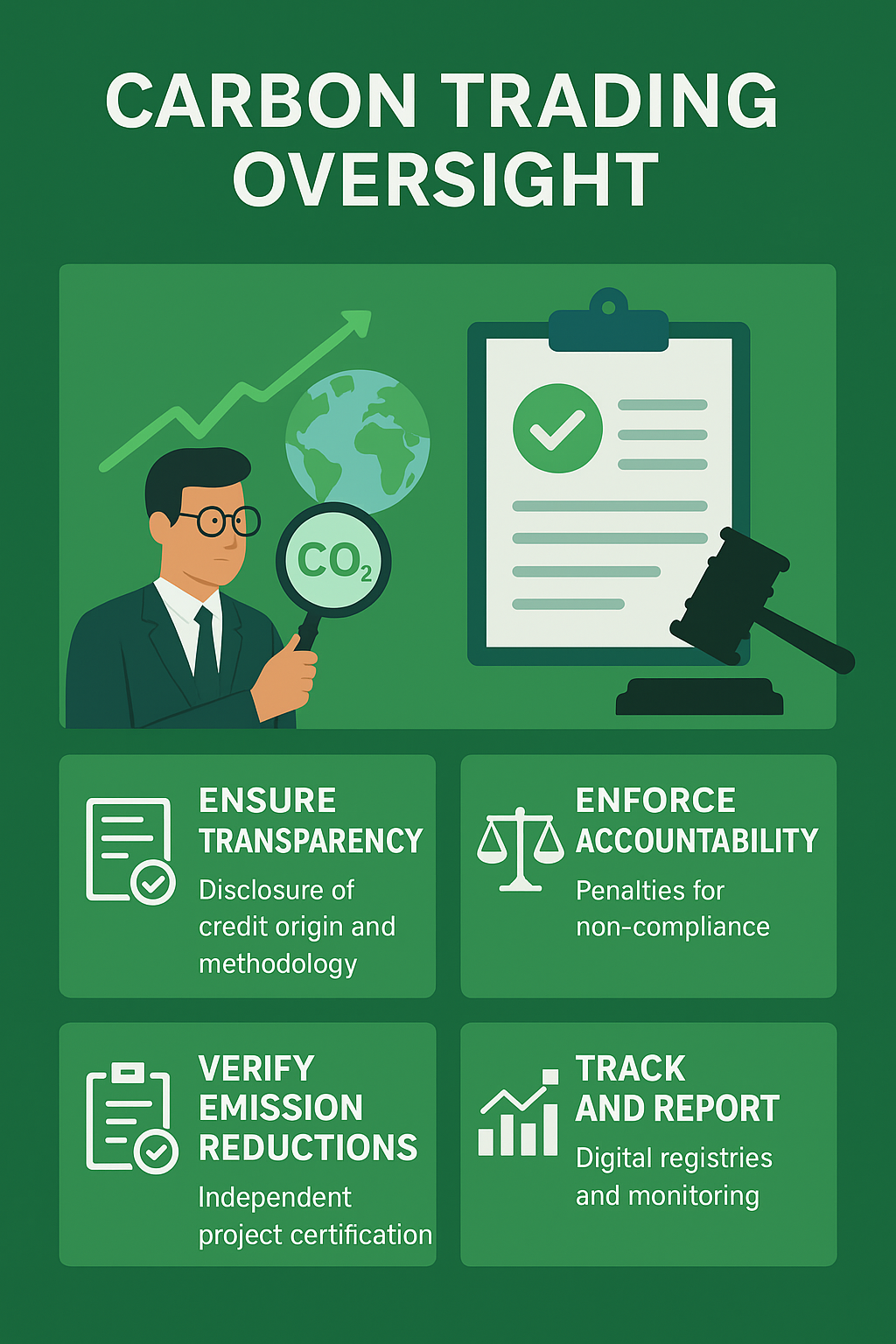September 2, 2025 | by Easy Rules
Carbon trading has emerged as one of the most significant tools in the global fight against climate change. By allowing companies and countries to buy and sell carbon credits, these markets create economic incentives for reducing greenhouse gas emissions.
But without strong oversight and regulation, carbon trading risks becoming a loophole for greenwashing rather than a genuine climate solution. In this blog, we break down the importance of carbon trading oversight, global practices, and India’s latest framework.YOU MUST READ
🌍 Why Oversight Matters in Carbon Trading
- Prevent Greenwashing – Oversight ensures that companies don’t just buy cheap credits to make false sustainability claims.
- Market Integrity – Proper regulation prevents fraud, double counting, or fake credits.
- Climate Compliance – Oversight aligns carbon markets with Paris Agreement goals and national climate policies.
- Stakeholder Trust – A transparent system builds trust among investors, governments, and the public.
🔎 Key Aspects of Carbon Trading Oversight
- Verification & Certification
Independent agencies verify that emission reduction projects (like renewable energy or afforestation) actually deliver measurable benefits. - Registries & Tracking
Digital registries track issuance, transfer, and retirement of carbon credits to prevent duplication. - Regulatory Bodies
Oversight is often done by environmental regulators, energy commissions, or securities boards. - Transparency & Disclosure
Carbon trading platforms must disclose the origin and methodology of each credit. - Market Surveillance
Similar to stock markets, trading is monitored to prevent manipulation or insider activity. - Penalties & Enforcement
Violations can attract heavy fines, suspension of credits, or disqualification from trading.
📌 Oversight Models Around the World
- European Union (EU ETS)
– The world’s largest carbon market with strict monitoring, verification, and centralized registries. - California Cap-and-Trade (USA)
– Linked with Quebec, uses robust compliance offset rules. - India (Carbon Credit Trading Scheme, 2023)
– Overseen by SEBI (Securities and Exchange Board of India) and CERC (Central Electricity Regulatory Commission). Expected to bring compliance and voluntary markets under one framework. - Voluntary Carbon Market (VCM)
– Standards like Verra and Gold Standard provide oversight, but the lack of global uniformity remains a challenge.
⚠️ Challenges in Carbon Market Oversight
- Fragmented global standards between compliance and voluntary markets.
- Risk of “phantom credits” from projects that don’t truly cut emissions.
- Developing countries face weak regulatory infrastructure.
- Transparency issues in some registries.
✅ Conclusion
Carbon trading oversight is the backbone of a credible carbon market. Without effective regulation, monitoring, and enforcement, carbon credits risk becoming a tool for financial speculation rather than climate action.
For India, the upcoming carbon credit trading framework under SEBI and CERC could set a new benchmark if designed with transparency, strict verification, and digital tracking. Globally, stronger coordination and uniform standards are needed to ensure that every traded credit represents a real, measurable, and permanent emission reduction.

